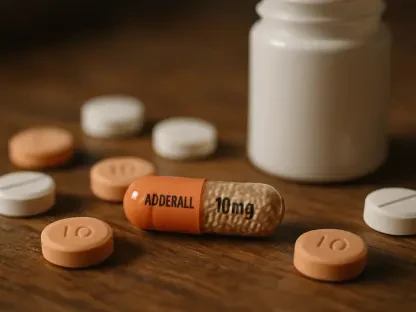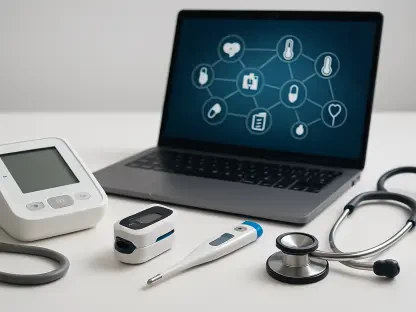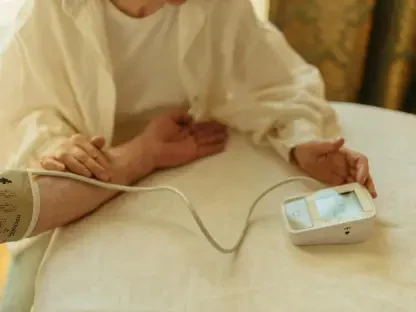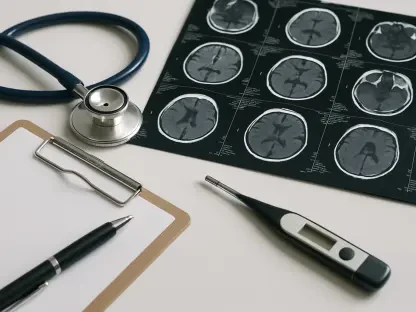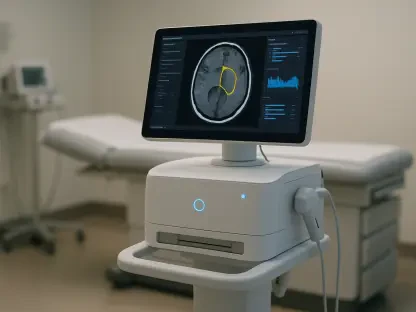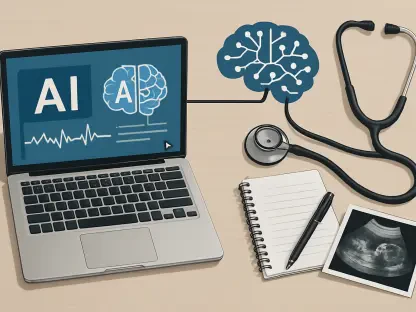In recent years, the medical community has been grappling with the long-term effects of COVID-19, particularly concerning lung health. As the world continues to manage the aftermath of this virus, radiologists play a crucial role in diagnosing and monitoring post-COVID respiratory complications. Post-COVID lung conditions often manifest as persistent abnormalities detectable on computed tomography (CT) scans. Establishing a consensus among radiologists on best practices for these scans could transform patient outcomes, making diagnosis and follow-up more accurate and effective. The recent international consensus aims to refine post-COVID CT imaging by standardizing the terminology and procedures associated with detecting lingering lung issues. This effort ensures clarity in communication and precision in treatment planning, addressing the often confusing overlap between post-COVID abnormalities and other lung diseases. Consequently, radiologists need to be well-acquainted with these guidelines to contribute to optimized patient care and enhanced research data integrity.
Standardizing Terminology and Imaging Protocols
The consensus emphasizes the importance of employing consistent terminology derived from the Fleischner Society Glossary to describe CT findings in post-COVID cases. Specific terms like “post–COVID-19 residual lung abnormality” are designed to accurately communicate CT findings without associating them with unrelated lung diseases. This clarity assists medical professionals in making informed decisions regarding patient management and supports the gathering of precise data for research purposes. The guidelines suggest chest CT imaging is most appropriate for individuals whose respiratory symptoms persist or worsen three months after infection. Especially for symptoms enduring at least two months without other identifiable causes, CT scans become a necessary diagnostic tool. Additionally, the recommendation extends to patients hospitalized with moderate to severe COVID-19, advocating for CT scans to be scheduled three to six months after discharge. This approach is rooted in recognizing the high incidence of residual lung abnormalities in this patient group. By setting these standardized timing and usage principles, the consensus aims to unify healthcare approaches across various settings, ensuring patients worldwide receive timely and effective follow-up care.
Radiologists are encouraged to adhere to protocols that manage radiation exposure under the principle of “as low as reasonably achievable” (ALARA). Balancing the need for high-quality diagnostic images with the imperative to minimize radiation risk is crucial. In implementing these protocols, radiologists must focus on optimizing CT procedures with low-dose techniques, particularly during follow-up assessments. This competent blend of image clarity and patient safety exemplifies the radiologist’s pivotal role in successfully navigating post-COVID imaging challenges. By adopting this measured approach, radiologists deliver precise diagnostics while safeguarding patient health, ultimately enhancing patient care and supporting the broader medical endeavor to mitigate post-COVID complications’ long-term impact.
Addressing Post-COVID CT Challenges
Approximately 6% of individuals recovering from COVID-19 may experience ongoing symptoms, including lung issues termed as “long COVID” or post-COVID conditions. Among patients who were hospitalized with acute COVID-19, a staggering 50% show CT scan abnormalities, while around 25% exhibit restrictive pulmonary functional impairments several months post-infection. These statistics underscore the complexity and wide-reaching impact of COVID-19 on respiratory health, requiring radiologists to differentiate between lingering COVID-19 lung abnormalities and other evolving fibrotic changes. They must skillfully distinguish between features such as ground-glass opacities and fibrosis, demanding a refined diagnostic acumen built on the consensus standards. Recognizing the potential for long-lasting or even permanent changes in respiratory function, follow-up imaging becomes vital in accurately evaluating these residual alterations. Adhering to guidance ensures that necessary imaging is conducted based on actual clinical needs, which in turn enables timely intervention and tailored patient care.
The collaboration to develop this consensus brings together global expertise, aiming to align imaging practices more consistently with clinical realities. This initiative not only advances knowledge but also fosters enhanced healthcare delivery on a worldwide scale by creating thorough, evidence-based treatment strategies for patients recovering from COVID-19 pneumonia. Furthermore, the collective effort ensures that recommendations remain grounded in clinical necessity, optimizing patient imaging and care without unnecessary procedures. This international consensus symbolizes a commitment to shared medical progress, bridging gaps in global patient care by unifying radiological understanding and diagnostic practices. As this consensus continues to shape the handling of post-COVID cases, it paves the way for more cohesive and informed medical strategies that extend beyond radiology into comprehensive patient management.
Global Implications and Future Directions
In recent years, the medical community has faced the challenge of understanding the long-term effects of COVID-19, especially on lung health. As society continues to cope with the virus’s lingering impact, radiologists have become essential in diagnosing and monitoring respiratory complications resulting from COVID-19. These complications often appear as persistent abnormalities on CT scans, emphasizing the need for radiologists to reach consensus on best practices for these scans. This alignment could significantly improve patient outcomes by enhancing the accuracy and effectiveness of diagnosis and follow-up care. A recent international consensus aims to improve post-COVID CT imaging by standardizing the terminology and procedures used in identifying residual lung issues. This initiative ensures clear communication and precise treatment planning, reducing the confusion that often arises from the overlap between post-COVID abnormalities and other lung diseases. Thus, radiologists must be well-versed in these guidelines to optimize patient care and contribute to more robust research data integrity.



